How are devices for measuring resistance arranged and working
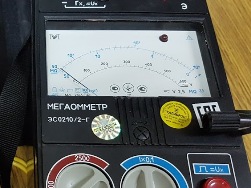 By their physical nature, all substances react differently to the flow of electric current through them. Some bodies pass it well and they are referred to as conductors, while others are very bad. These are dielectrics. The properties of substances to counteract the flow of current are estimated by numerical expression - the value of electrical resistance.
By their physical nature, all substances react differently to the flow of electric current through them. Some bodies pass it well and they are referred to as conductors, while others are very bad. These are dielectrics. The properties of substances to counteract the flow of current are estimated by numerical expression - the value of electrical resistance.
The principle of its definition was proposed by Georg Om. The unit of measure for this characteristic is named after him. The relationship between the electrical resistance of a substance, the voltage applied to it, and the flowing electric current is called Ohm's law. Based on the dependence of the three most important characteristics of electricity shown in the picture, the resistance value is determined. To do this, you must have: an energy source, for example, a battery or accumulator, measuring instruments for current and voltage. The voltage source is connected through an ammeter ...
Operation and repair of electromagnetic relays
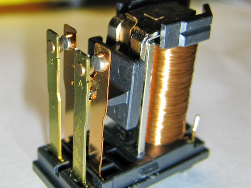 The relay has a limited resource, this is primarily due to the principle of its operation: the electromechanical relay operates due to the magnetic field and the closure of mechanical contacts. Mechanical contacts wear out, the coil burns out, hence the need for repair. Most often, the repair consists in cleaning the contacts or solving problems with the coil.
The relay has a limited resource, this is primarily due to the principle of its operation: the electromechanical relay operates due to the magnetic field and the closure of mechanical contacts. Mechanical contacts wear out, the coil burns out, hence the need for repair. Most often, the repair consists in cleaning the contacts or solving problems with the coil.
Before moving on to repair issues, let's walk through the components of an electromagnetic relay. The relay itself compares the magnitude of the control action, after which the signal is transmitted to the controlled circuit. In our case, an electric current is supplied to the coil. The anchor is attracted to the core of the coil due to the magnetic force created by the magnetic flux. The relay is triggered if sufficient voltage and current are supplied. When the electromagnet trips, the contacts close ...
Why do phase-zero loop resistance measurements be performed by professionals and not hackers
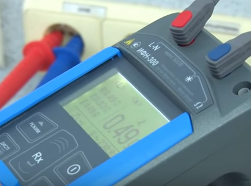 Modern man is used to the fact that electricity constantly serves to satisfy his needs and does a great, useful job. Quite often, the assembly of electrical circuits, the connection of electrical appliances, the electrical installation inside a private house is performed not only by trained electricians, but also by home craftsmen or hired migrant workers.
Modern man is used to the fact that electricity constantly serves to satisfy his needs and does a great, useful job. Quite often, the assembly of electrical circuits, the connection of electrical appliances, the electrical installation inside a private house is performed not only by trained electricians, but also by home craftsmen or hired migrant workers.
However, everyone knows that electricity is dangerous, can injure and therefore requires the quality of all technological operations to ensure reliable passage of currents in the working circuit and ensure their high isolation from the environment. The question immediately arises: how to check this reliability after the work seems to be done, and the inner voice is tormented by doubts about its quality? The answer to it allows you to give a method of electrical measurements and analysis, based on the creation of increased loadcalled phase-zero loop resistance measurement...
Device and relay application examples, how to choose and correctly connect a relay
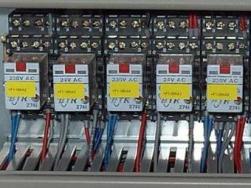 Switching is turning the appliance on or off in the network. To do this, use disconnectors, switches, circuit breakers, relays, contactors, starters. The last three (relays, contactor and magnetic starter) are similar in structure, but are designed for different load capacities. These are electromechanical switching devices.
Switching is turning the appliance on or off in the network. To do this, use disconnectors, switches, circuit breakers, relays, contactors, starters. The last three (relays, contactor and magnetic starter) are similar in structure, but are designed for different load capacities. These are electromechanical switching devices.
To turn on the load, you need to apply voltage to its conclusions, it can be constant and variable, with a different number of phases and poles. The voltage can be applied in several ways: a detachable connection, a disconnector, through a relay, a contactor, a starter or a semiconductor switching device.The first two methods are limited both by the maximum switching power and by the location of the connection point. This is convenient if you turn on the light or the device with a switch or an automatic machine ...
Limit switches - design features and examples of use
 In most automation circuits and control circuits, limit switches are used - this is an apparatus for switching an electric circuit through the action of an actuator on it. They are sometimes called limit switches. They are used in automatic electric drive devices, burglar alarm systems and other devices. We will consider a typical application in this article, we will begin from simple to complex.
In most automation circuits and control circuits, limit switches are used - this is an apparatus for switching an electric circuit through the action of an actuator on it. They are sometimes called limit switches. They are used in automatic electric drive devices, burglar alarm systems and other devices. We will consider a typical application in this article, we will begin from simple to complex.
I decided to start the article with what most ordinary people saw. If few people work with lathes, elevators and hoisting cranes, then everyone faced cars. The first thing that comes to mind is the limit switch, signaling an open door. In classic domestic cars, it was used to turn on interior lighting (ceiling lamp) ...
10 most common causes of electrical failures
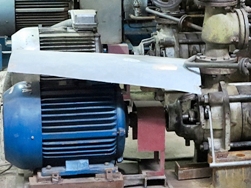 The electrician in his practice is faced with completely different cases, which sometimes reach the point of absurdity. After all, you can never foresee what might happen to electrical equipment during its operation. Equipment is three-phase and single-phase - these types are most common.
The electrician in his practice is faced with completely different cases, which sometimes reach the point of absurdity. After all, you can never foresee what might happen to electrical equipment during its operation. Equipment is three-phase and single-phase - these types are most common.
However, it is worth noting that their breakdowns are either the same or have similar causes. The most common element in the electrical equipment of an industrial enterprise was and remains (perhaps forever) an electric motor, let's look at the causes of their breakdowns. Problems with electric motors. Situation: voltage comes to the electric motor, but it does not work or does not work properly. Start inspecting the boxes on the motor housing where the cable is supplied and disconnecting the star or triangle circuit. Oxidation or burning of contacts. You need to clean them and make a trial run ...
LD Ladder Language and its Application
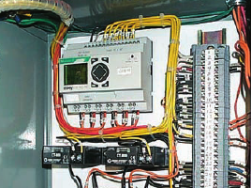 The ladder or ladder diagram language LD (from the English Ladder Diagram) is an easy-to-use, graphical development language. It is based on relay-contact circuits, so the logic elements here are: relay windings, relay contacts, horizontal and vertical jumpers.
The ladder or ladder diagram language LD (from the English Ladder Diagram) is an easy-to-use, graphical development language. It is based on relay-contact circuits, so the logic elements here are: relay windings, relay contacts, horizontal and vertical jumpers.
A pair of relay contacts or buttons are the main logical variables of the LD language, while the state of the variables is nothing more than the state of the contacts: open or closed. The program itself in this graphic language seems to be an analogue of the relay circuit, which can include many different functional blocks. In general, the syntax of the LD language makes it very easy to build logic circuits for relay technology. As such, the language of relay circuits existed in the time of Thomas Edison, and only in the early 1970s it was adapted for the first PLCs ...
The practical application of electrolysis
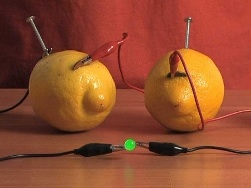 When an electric current passes through a solution or a melt of electrolyte, the solutes or other substances that are the products of secondary reactions on the electrodes are released on the electrodes. This physicochemical process is called electrolysis.
When an electric current passes through a solution or a melt of electrolyte, the solutes or other substances that are the products of secondary reactions on the electrodes are released on the electrodes. This physicochemical process is called electrolysis.
The essence of electrolysis is in the electric field created by the electrodes, the ions in the conducting fluid come in an orderly motion. The negative electrode is the cathode, the positive is the anode. Negative ions called anions (hydroxyl group ions and acid residues) rush to the anode, and positive ions called cations (hydrogen, metal, ammonium ions, etc.) rush to the cathode.d.) An oxidation-reduction process takes place at the electrodes: electrochemical reduction of particles occurs at the cathode. Dissociation reactions in an electrolyte are primary reactions, and reactions that occurdirectly on the electrodes ...
